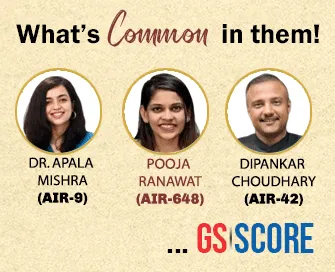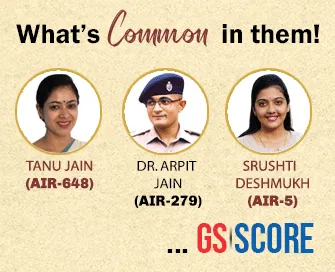

31st August 2023 (9 Topics)
Editorials
Context:
The Indus Waters Treaty (IWT), brokered by the World Bank, which has again become a source of contention between India and Pakistan, considerably encapsulates the principle of equitable allocation rather than the principle of appreciable harm.
Issues raised in World Bank
- India’s Hydel Project- The core of the issue now between India and Pakistan involves the Kishanganga and Ratle hydroelectric power plants in India’s Jammu and Kashmir.
- Bone of Contention- India considers these projects crucial for energy needs and the region’s development, while Pakistan has raised objections, citing violations of the treaty
- Request to form a Court of Arbitration- In 2016, Pakistan requested the World Bank to form a Court of Arbitration. To this, India requested a neutral expert be appointed to deal with the dispute.
India’s stand
- Abstained from participating- India has been abstaining from participating in the proceedings at the Permanent Court of Arbitration and did not attend the present proceedings as well.
- Cannot be compelled- India said that it cannot be “compelled to recognize or participate in illegal and parallel proceedings not envisaged by the Treaty”
- Participating in the neutral expert’s proceedings- India has been participating in the neutral expert’s proceedings whose ?rst meeting was held at The Hague.
Way Ahead
- Need to revisit the Treaty-There is a need to revisit the Indus Waters Treaty observes that more than going to court, the need is to incorporate “equitable and reasonable utilisation” and the “no harm rule” in the IWT.
- Need to involve local stakeholders- There is a need to involve local stakeholders also in any negotiation process between India and Pakistan on shared water issues.
- Recognise common interests- To make the IWT work there is a need for the two countries to recognise their common interest in the optimum development of the Indus Rivers System.


Editorials
Context:
As per the new study by Pew Research Center, India’s rising geopolitical and geo-economic clout is clearly visible in the data which shows lacks and developments of India, as a global Power.
The Pew Survey:
- About: Pew Research Center is a non-partisan fact tank that informs the public about the issues, attitudes and trends shaping the world.
- Procedure: It conducts public opinion polling, demographic research, content analysis and other data-driven social science research.
- Aim: It generates a foundation of facts that enriches the public dialogue and supports sound decision-making.
Highlights of the survey:
- Observations: The Pew survey (Feb-May 2023) for 30,861 adults in 24 countries, including India, reveals positive global perception of India.
- Data revealed: 46% respondents hold favorable view, 34% unfavorable. Modi maintains high popularity; 80% Indians approve 55% very favorable.
- Political instance in the country: Survey suggests PM’s strong favorability (79%) positions him as front-runner for third term in 2024 elections.
Global Views on India's Rise: Pew Survey Insights
- Divergent Perceptions: Pew survey shows mixed international opinion on India's growing influence.
- Europe's Apprehensions: Europe's favorability towards India dips, linked to Ukraine stance. India's strategic autonomy and rise evoke discomfort.
- Successful Ascent: India navigates power aspirations adeptly, fostering global partnerships; outperforms China in garnering positive perceptions.


Editorials
Context:
As per a recent survey conducted by a NGO named ‘SRIJAN’ on rural development and employment, indicates that facilitating rural industrialisation is essential to connect farm and off-farm activities, creating numerous opportunities for non-farm employment.
Need to focus on Transformation
- Value Addition's Role: Transforming agricultural products enhances appeal, generates multiplier effect, and reduces poverty through increased wages.
- India's Untapped Potential: Despite being a major producer, India processes less than 10% of agricultural goods. Growing demand offers value addition opportunities.
- Doubling Farmers' Income Strategy: Secondary agriculture aligns with this strategy, fosters rural economic growth, and utilizes local resources for value addition.
Highlights of the survey:
- Secondary Agriculture Categories: Report outlines Types A, B, and C for value addition, alternative enterprises, and crop residues utilization.
- With Government Initiatives: Karnataka establishes Directorate of Secondary Agriculture to boost income, aligning with doubling farmers’ income goal.
- Promoting Tribal Empowerment: NGO SRIJAN empowers Madhya Pradesh's Sahariya tribes with secondary agriculture, enhancing value chains and livelihoods.
Way forward
- SRIJAN's Success: Study by NGO SRIJAN aids tribal communities in Madhya Pradesh, raising income by linking to markets and improving techniques.
- Strengthening Secondary Agriculture: Prioritize studies, credit, partnerships, rural industrialization, training, and central coordination for effective growth.
- Integrated Approach: Embed secondary agriculture in educational curricula to ensure skilled workforce for managing both primary and secondary sectors.


Editorials
Context:
A latest paper released named RATIONS study contains the results of research addressing the effectiveness of food supplementation for patients with Tuberculosis (TB) in 28 public clinics in Jharkhand.
About the findings
- Findings of the Research: Studies in India's underdeveloped region show food supplementation significantly reduces TB risk and mortality rates.
- Comprehensive Approach: Supplementation for patients and families cuts TB risk highlights historical decline in TB due to nutrition.
- Publication Impact: Lancet journals publish findings, underscoring significance of addressing TB with nutritional interventions alongside medical treatment.
Link between Nutrition & TB
- Shift in TB Treatment: Prior focus on medication, ignoring social determinants. RATIONS study highlights food supplementation's dual benefits.
- Broader Implications: Nutritional interventions could impact various diseases. Addressing social determinants within healthcare improves patient and population health.
- Holistic Approach: Universal health coverage should include social welfare integration for comprehensive care, reinforcing public healthcare in India.
Recent Efforts
- Nikshay Poshan Yojana: Government initiated scheme for TB patients' food supplementation. RATIONS study urges integrated approach, expanding coverage.
- Science and Collaboration: RATIONS led by medical school and state institutions, funded by ICMR, showcases effective state-civil society partnership.
- Health Research Priority: High-quality research for better health, leveraging civil society, vital for India's progress in health and science.



